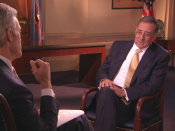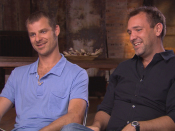- Text
Coal Ash: 130 Million Tons of Waste
When coal ash is disposed of in dry, lined impoundments it is said to be safe. But it's often dumped into wet ponds - there are nearly 500 of them across the country - and in those cases the ash could pose health risks to the nearby communities.
Jim Roewer, one of the top lobbyists for the power industry, told 60 Minutes correspondent Lesley Stahl that nearly half of the electricity in the United States is generated by coal.
"Coal's gonna be around for a long time," he said.
"We really can't get rid of coal," Stahl remarked.
"We shouldn't get rid of coal," Roewer said.
"Well, should or shouldn't, we can't. And coal makes waste. Would you say that the industry has done a good job of disposing of the coal ash waste?" Stahl asked.
"We can do better," Roewer said.
Asked if that means no, Roewer told Stahl, "Well, we had a Kingston spill."
That's Kingston, Tenn., where last December a giant retention pool of coal ash buckled under the weight of five decades of waste.
A billion gallons of muck shot into the Emory River like a black tsunami, engulfing homes, uprooting trees, and throwing fish out of the water.
Residents woke up to an apocalyptic moonscape of "ashbergs" everywhere. The spill was 100 times larger than the Exxon Valdez and it was all coal ash.
Stahl had never heard of coal ash before the Kingston incident.
"Wasn't a problem," Roewer remarked.
"Well, it was a problem, we just didn't know," Stahl replied.
The problem is: where do you put all that stuff? The Tennessee Valley Authority (TVA) dumped up to 1,000 tons of coal ash every day into a wet pond near the plant, slowly amassing a waste-cake 60 feet high. Some of the ingredients, according to the EPA, were arsenic, lead, mercury, selenium, cadmium and other toxic metals.
"You know, some people say that this is a poisoned meadow," Stahl said to Leo Francendese, an environmental "Mr. Fix It," sent by the EPA to clean up this mess.
"In the wrong circumstances coal ash is dangerous. Breathing it, that's dangerous," Francendese replied.
The summer heat can bake the ash into a fine talc-like powder that can wreak havoc on your lungs.
So while the government has never formally labeled coal ash a hazardous waste, it's being treated as such at the Kingston site.
As the 60 Minutes team left the site, they were scrubbed clean, as was their car.
Francendese explained that every vehicle that exits the site must go through the cleaning process.
Gary Topmiller lives right on the river. He had a front row seat when the spill covered his dock.
"Now what the doctors did tell me was, 'Get out of there.' And I said, 'I don't have any place to go,'" Topmiller told Stahl.
- 1
- 2
- 3
- 4
- Next Page »
- Subversive, satirical, and sold out
- Can hunting endangered animals save the species?
- Can hunting endangered animals save the species?
- The Defense Secretary: Leon Panetta
- Creating "South Park": Laughs on a deadline
- The Defense Secretary: Leon Panetta
- Defense Secretary Panetta, Big Game Hunting, Parker And Stone
- Subversive, satirical, and sold out
- Is sugar toxic?
- LeBron James: Still chasing that NBA ring
- At home with Leon Panetta
- SpaceX, The Murder of an American Nazi, Angelina
- Murder of an American Nazi
- From fear to fortune: Tel Aviv's attitude
- Can hunting endangered animals save the species?
- Roger Waters rebuilds Pink Floyd's "The Wall"
















